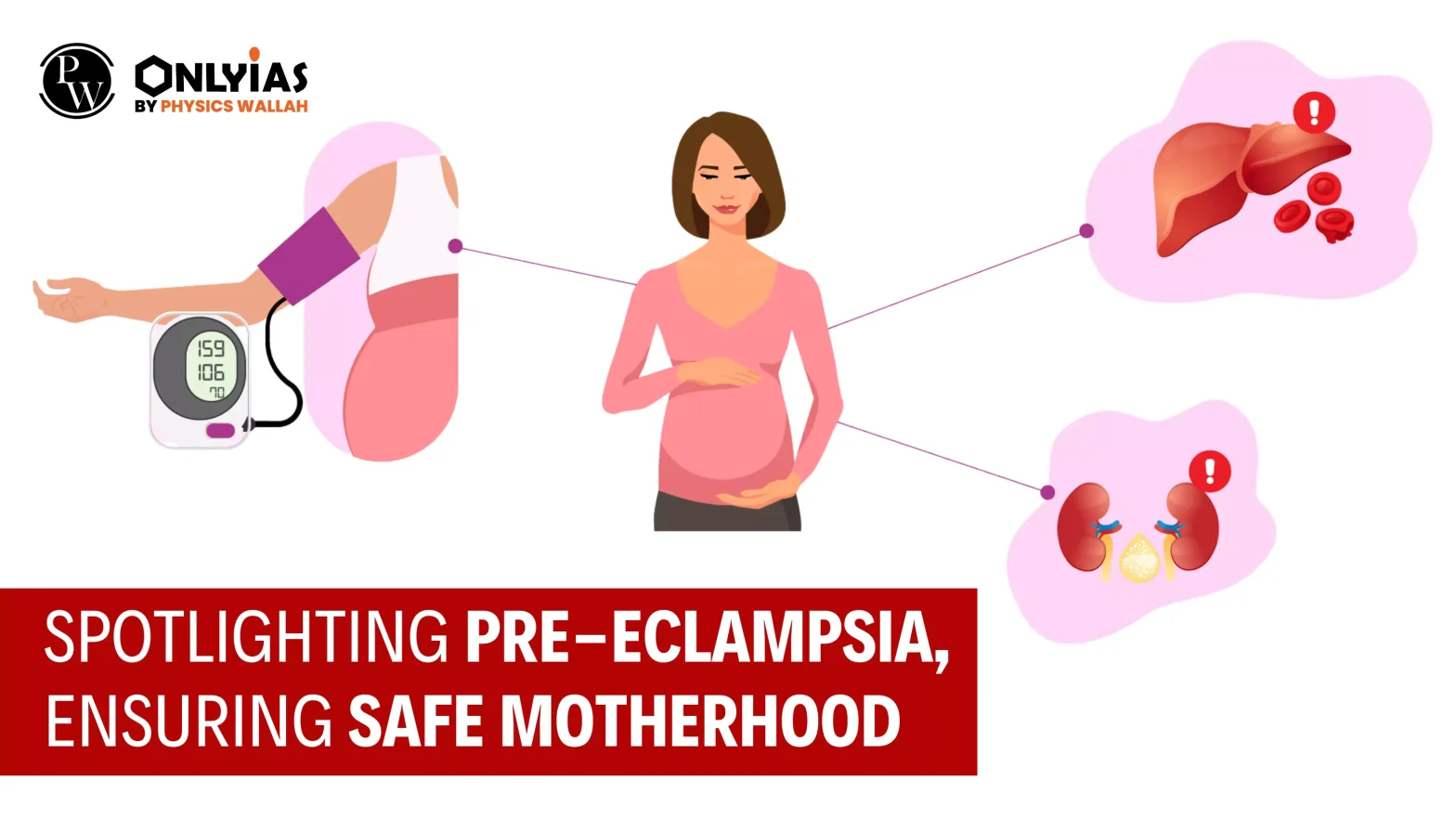Context
New test in the form of a new blood test that can assess the risk of preeclampsia in the early weeks of pregnancy before most people show symptoms.
About Pre-Eclampsia
- Pre-eclampsia: It is characterized by elevated blood pressure and protein in the urine. The condition usually develops after 20 weeks of pregnancy.
- Although preeclampsia can usually be managed, it can sometimes develop into full eclampsia or HELLP syndrome.
- At times, preeclampsia can be life-threatening, to both parents and their babies.
- India’s Adverse Pregnancy Outcomes:
- India accounts for nearly a quarter of the world’s adverse pregnancy outcomes.
- NFHS-5 statistics: Perinatal mortality rates at 32 per 1,000 pregnancies, neonatal mortality rates at 25 per 1,000 live births.
- Hypertensive disorders in pregnancy are a leading cause of maternal death.
Enroll now for UPSC Online Course
Way Forward
- Collective Responsibility: Stakeholders includes obstetricians, radiologists, fetal medicine specialists, neonatologists.
- Frontline workers: Accredited Social Health Activists and Anganwadi workers play crucial roles.
- Preventable Conditions: Prematurity, low birth weight, growth restriction, and pre-eclampsia contribute to maternal and neonatal morbidity and mortality.
- Hypertensive disorders of pregnancy (HDP) lead to long-term health complications for mother and baby.
- Pre-eclampsia increases risks of heart failure, coronary heart disease, stroke, and cardiovascular mortality.
- Postnatal Care: Importance of postnatal cardiovascular assessment. Do not neglect post-partum maternal cardiovascular health after pre-eclampsia.
- Pre-eclampsia Awareness:
- May as “PE Prevention Month” and World PE Day on May 22.
- Symptoms: High blood pressure, swelling, severe headaches, vision changes, upper abdominal pain, difficulty breathing.
- Screening and Management:
- Screening for pre-eclampsia and fetal growth restriction in the first trimester.
- Managing high-risk pregnancies with established protocols.
- Combined screening: Maternal history, demographics, colour Doppler ultrasound, mean arterial pressure, placental biomarkers, timely pharmacological intervention.
- Comprehensive care throughout all trimesters.
- Programme in India: Indian Radiological and Imaging Association (IRIA) programme Samrakshan.
- Mission to reduce pre-eclampsia from 8%-10% to 3%, and fetal growth restriction from 25%-30% to 10%.
- Community engagement and sustained leadership essential.
Conclusion
Every woman deserves to bring forth life with confidence and security. Thus, we must champion the safe motherhood, spread awareness and ensure proper care.
![]() 22 May 2024
22 May 2024

